Matador Network's Blog, page 1038
August 8, 2019
Best bars in Times Square

On a swelteringly hot July day in New York City, I took a look around in Times Square at the hordes of tourists with selfie sticks slowly shuffling shoulder-to-sweat-stained-shoulder. There were people in Pikachu and Transformers costumes pushing for tips from unknowing passersby, and a bombardment of advertisements flashing who knows what. It was, simply, a New Yorker’s hell.
Up until the past couple of years, there were few, if any, escapes. A quick look around for bars, and you’d think your only option was a Coronarita at Bubba Gump Shrimp Co. But thanks to a number of recent bar openings, coupled with the survival of a few hardy stalwarts, surviving Times Square is possible. In fact, it’s a legitimately good place to get a drink.
“Strangely, this is true now,” Zach Mack told me when I asked him if I was crazy for thinking this. Mack is a beer writer and the owner of New York City’s beloved Alphabet City Beer Co. and Taco Vista. He too, took a tone of disbelief. Yet when asked if he would consider opening a bar near Times Square, he said he would consider it “if the rent was right!”
That last bit is a stickler — both for owners and for drinkers. Rents near the “Crossroads of the World” are nearly $2,000 per square foot (this is one of the most visited and most Instagrammed places in the world, after all). The drink prices at both good and bad bars reflect that.
It wasn’t always like this. Times Square was a center of commerce in the decades following its renaming in honor of The New York Times building in 1905, but by the Great Depression it started to slip. It only got worse through the 1980s as it descended into the mess of prostitution, peep shows, and drugs. When Times Square was cleaned up in the Disneyfication years of the 2000s, any bars worth drinking at were largely swept away as well.
“The greatest challenge of operating a bar in Times Square is to be in Times Square,” Salvatore Tafuri, bar director at The Times Square EDITION, said over email. “For many years, New Yorkers in particular have associated Times Square with large food chains, lower quality offerings and a place where it is impossible to have fun, except perhaps for bringing travelers and taking a few selfies.”
Thankfully, Midtown is on the verge of coming full circle as a place locals actively seek out for drinks and entertainment. These are the bars that prove that the streets around Times Square are once again a good place to go out.
1. The Blushing Bar at Valerie

Photo: Gabi Porter
Valerie opened in January 2019, but it evokes the extravagance of the Gilded Age with smoked mirrors, a plush seat cushion ceiling, and murals of burlesque dancers. Head up to the Blushing Bar on the second floor for cocktails in a more intimate setting.
The menu changes with the seasons and the cocktails ($15) play off of the long list of spirits on the back bar. Come with a date and order one of the bottled cocktails for two ($26) like the White Negroni or the classic Negroni made with smoked vermouth. There’s also a customizable Gin & Tonic menu that lets you pair a craft tonic of your choosing with one of the 25-plus gins from more than 10 countries.
For a seat at a table, speak with the hostess by the stairs when you walk in. Reservations can be made in person only, while seats at the bar (there’s no standing) are first come, first served.
Where: 45 W 45th St, New York, NY 10036
2. Jimmy’s Corner

Photo: JIMMY’S CORNER/Facebook
Remember those seedy years of Times Square in the 1970s, ‘80s, and ‘90s? Jimmy’s Corner has withstood it all. Jimmy Glenn, 89, a boxer and trainer who worked with Muhammad Ali and Floyd Patterson, opened Jimmy’s Corner in 1971. It’s still his corner, and he still comes by.
First things first: Don’t come in looking for craft beer, and don’t expect anything other than a well drink. Pay in cash and tip well, as the drinks ($3 to $5) are the cheapest you’re going to find in most of New York City, let alone Times Square. Fans of a cheap drink among friendly people are welcome, as is anyone who wants to sit and have a Boilermaker by themself.
Spot Jimmy’s Corner by the unassuming green awning out front. The bar is narrow and can get three people deep back to the wall after work, but you can head toward the back past the photos and memorabilia of Jimmy and other legends if you’re looking for a bit more room. The best experience, however, is to get there early enough for a stool at the bar where you can listen to the R&B and soul playing from the jukebox while you talk to the regulars and passively watch sports on the TV.
Where: 140 W 44th St, New York, NY 10036
3. The Polynesian

Photo: Noah Fecks
The Polynesian opened in the summer of 2018 to much fanfare among tiki aficionados and bar lovers. Located on the third floor of the Pod Hotel, it’s run by Major Food Group with famous tiki bartender Brian Miller at the helm.
“I want to bring the Polynesian islands to the island of Manhattan,” Miller told The New York Times before the opening. “Just because we live in an urban jungle doesn’t mean we can’t celebrate that we live on an island.”
An island, of course, whose commercial overlords worship the idol known as Times Square.
“The biggest challenge we faced when opening The Polynesian was the fact that we are in Times Square, which many considered to be a ‘no-go’ zone,” general manager Emily Collins said over email. “While it is popular with tourists, most locals studiously avoid the area, except perhaps to catch a Broadway show. And the area doesn’t exactly conjure up images of fine dining and elevated cocktails, at least not yet.”
Rather than shy away, The Polynesian decided to take an area that’s underserved and make it compelling. The Polynesian is 4,900 square feet and can hold 200 people between the inside bar and outside terrace. The interior feels like a flashback to a different era with bamboo ceilings, patterned teakwood floors, and plants everywhere. If not a different era, then at least Jack Sparrow’s paradise dreamhouse.

Photo: Eric Medsker
The drinks range from originals created by Miller and the bar staff like the Martiniki ($17, made with multiple rums, gin, pamplemousse, and absinthe) to tiki classics like Planter’s Punch ($17, made with rum, grenadine, falernum, bitters, and lime). Large-format drinks to share are served, like many of the drinks on the menu, in custom glassware. Try the Exotica Bowl ($85, made with kaffir-infused rums, curry, coriander, ginger, lemongrass, and more) that’s served in a table-hogging clam shell. While rum is the focus, you’ll find tiki drinks made with gin, mezcal, whiskey, and brandy. These heady drinks are tempered by bar food like the Pu Pu Platter and crab rangoon.
“In these stressful times, we can all set aside our differences and come together amicably around an exotic rum cocktail served in an enormous clam shell,” Collins said.
Where: 400 W 42nd St, New York, NY 10036
4. The Rum House

Photo: The Rum House/Facebook
The Rum House is not exactly an old Times Square bar, but it’s not exactly new either. The team behind Tribeca’s Ward III opened the modern Rum House in 2011 in the same location as the old Rum House, a dingy bar open since the early 1970s that was beloved by Broadway performers and theatergoers.
That location is right next to the lobby of the Edison Hotel. New York Magazine once described it as “a veneer of sleaze sets it a world apart from your classic martini-doling hotel bar…it’s one of the few remaining destinations near Times Square where a middle-aged lush from Dubuque can go to drown his sorrows in cheap liquor and plastic bowls of pretzels.” But it was described as such in a beloved way that appreciated the jukebox-singing crowd and piano-playing regulars eager to play a song on the keys in the corner. The kind of way that put it on Esquire’s best bars in America list in 2010 as writer Tom Chiarella’s “favorite dark bar.”
While the modern Rum House couldn’t be further from the old one in terms of vibe, it’s still a Times Square favorite. The floors are tile and the accents are dark wood, while the bar is copper-topped. The window looking out to the passing Times Square crowd still has drapes that are an eye-catching red, but now there’s bright lettering on the outside telling everyone what they’re looking into.
The drinks are better, too. As the name suggests, the focus here is on rum. Cocktails ($15 and up) are made with flavorful rums favored by bartenders, like The Real McCoy and Plantation 3 Stars. Some rums are common, others are rare and cost $150 a pour. For a taste without the price, there’s a happy hour from 12:00 to 6:00 PM with Daiquiris and Rum Punches for $10 and $5 Narragansetts.
Where: 228 W 47th St, New York, NY 10036
5. The Times Square EDITION

Photo: Liz Clayman
You can spend many hours at any of the bars on this list, but for an entire night out in Times Square, you don’t even have to leave The Times Square EDITION, a hotel that opened in 2019 with multiple bars and restaurants on site.
To start, there’s the Green Room in the fine dining restaurant 701West. The menu is filled with 18 original cocktails by bar director Salvatore Tafuri and his team, while a roaming Champagne trolley curated by wine director and advanced sommelier Amy Racine provides the bubbles. The drinks are grounded in the classics while staying true to the upscale location.
Then there’s The Terrace and the Lobby Bar, where you can find Broadway-inspired drinks and low-alcohol spritzes. Finally, there’s Paradise Club, a cabaret with a House of Yes show (which runs with a Manhattan cocktail trolley) that leads into a full-on dance club. You can choose dinner with the show for $195 (which includes caviar, tuna, duck, ribs, and more) or sit at the bar for $95 (where you’ll get appetizers and snacks). The club starts going at 11:00 PM Thursday through Saturday, and entry is free.
You’re not going to save any money drinking at any of The Times Square EDITION’s bars, but you’re going to have a great time spending it.
Where: 701 7th Ave, New York, NY 10036
6. Beer Culture

Photo: Beer Culture/Facebook
No, this isn’t the best beer bar in Midtown. For that, head up to As Is on 50th Street and 10th Avenue. This is, however, far and away the best beer bar you’ll find in a five-minute walk from where the ball drops on New Year’s Eve.
Beer Culture has 14 rotating taps (check the website for what’s currently pouring) and multiple large fridges with cans and bottles to drink on site or to take home with you. The selection ranges from local to obscure, though well-drunk beer nerds shouldn’t expect too many unfamiliar finds. It’s a spot to go before a show, or when you’re looking for an escape.
The beer to order here is whatever the bartender sounds most excited about. Other patrons are also likely to be knowledgeable about what’s on stock if you’re the type of person who likes speaking with strangers at bars. There’s even wine for the person in the group who doesn’t drink beer (though even non-beer drinkers can find a beer they’ll like here). For food, try elevated bar snacks like nachos or a hot dog.
Where: 328 W 45th St, New York, NY 10036
7. Dear Irving on Hudson

Photo: Noah Fecks
Another newcomer to the scene as of January 2019, Dear Irving on Hudson is the Times Square location of the original cocktail haven Dear Irving in Gramercy Park. With cocktail bar credit to uphold, it needed to be more than just another good cocktail bar — and it succeeded.
“We didn’t want it to be another anonymous Times Square bar, but instead something people would want to return to,” Meaghan Dorman, bar director and partner at Dear Irving on Hudson, said.
It’s located on the 40th and 41st floors of the Aliz Hotel, and has four balconies, each with a different view of the Manhattan skyline. Inside, the bar is Mad Men-class-meets-modern with floor-to-ceiling windows and plush, copper-orange couches. Reservations are taken, but the bar welcomes walk-ins.
The drinks menu has the obligatory classics along with wine, beer, and spirits. It also has an “Ode to The Empire State” section ($18 each), which focuses on cocktails made with New York-made spirits, like the Vice Versa made with New York Distilling Co.’s Dorothy Parker Gin and the Panorama Daiquiri made with Owney’s Rum. Take things into your own hands with the 007 Mission, where you get to “play ‘M’ & direct our bar staff.” For food, there are bites like the Lobster Tail Bun ($19) and rock shrimp tempura ($18).
“Visitors’ trips often come with the pressure of living up to the expectations of an NYC experience,” Dorman said, “and the staff thrives on making it excellent and showing off our city’s cocktail culture.”
Where: 310 W 40th St, New York, NY 10018 

More like this: The 11 best dive bars in Manhattan
The post Times Square is a legitimately good place to drink now appeared first on Matador Network.

UK trains staying in Interrail

The Interrail train program has allowed unlimited train travel across Europe at a fixed price for nearly 50 years, and earlier this week, UK train operators announced their withdrawal from the program, effective on January 1, 2020. For a whole 24 hours, people were speculating on the widespread consequences this might have on UK rail travel. But in a surprising turn of events, the Rail Delivery Group (RDG), which represents the UK train industry, changed course and decided to remain in Interrail.
The withdrawal would have meant that travelers would no longer have the option of starting their journey from their home station. Instead, they would’ve needed to start on the Eurostar from London. And for European travelers, instead of being able to visit the UK as part of Interrail, they would’ve been required to purchase separate BritRail passes, which would’ve given them access to the UK’s rail system.
The announcement prompted some serious backlash, particularly from Liberal MP’s like Luisa Porritt, deputy leader of the Liberal Democrat MEP’s. “This is a desperately sad decision,” she said, “which in particular could lead to fewer young Europeans enjoying Britain and more barriers to Brits enjoying the rest of Europe. This sends the message we are turning our backs on Europe and the fantastic opportunities it offers us.”
Luckily, the RDG has had a change of heart. Robert Nisbet, director of nations and regions for the RDG, said, “We are pleased to be able to tell passengers that we have reached agreement and will be remaining part of both the Interrail and Eurail passes.”
People are undoubtedly breathing a sigh of relief at the sudden reversal, but confidence in the RDG has taken a hit, with many believing it simply bowed to all of the negative pressure following its initial announcement.
Interrail was launched in 1872, with the aim of giving young people under the age of 21 the ability to travel to 21 countries for just $32. The program hasn’t waned in popularity, as over 300,000 Interrail passes were sold last year. 
This article was updated on August 8, 2019.

More like this: The 11 most beautiful train stations around the world
The post One day after announcing withdrawal from Interrail program, UK reverses decision appeared first on Matador Network.

Sweden to return Sami remains

On August 9, the Swedish History Museum will return the remains of indigenous Sami people to their burial ground in Lycksele, from where they were taken in the 1950s.
The 25 skulls were exhumed from their burial place over 50 years ago, ending up at the museum to be examined and test racial theories. The repatriation ceremony will coincide with Sweden’s Indigenous People’s Day and acknowledge the terrible treatment of the Sami people over the years, including forced religious conversion and segregation.
There are up to 100,000 semi-nomadic Sami people, mostly in northern Scandinavia and about 2,000 in Russia.
According to The Local, remains of the Sami people were routinely collected in Sweden during the 19th and 20th centuries through excavations, grave robberies, and trade.
The return of the skeletal remains is meant to right a wrong and mend the ties between the Swedish government and the Sami people.
Eleven Swedish museums, universities, and institutes are still known to possess Sami bones and skulls. 

More like this: The 8 coolest places in Sweden worth visiting outside of Stockholm
The post Sweden to return the skulls of 25 Sami people to their proper resting place appeared first on Matador Network.

The best things to do in Nepal

The mighty Himalayas are what beckons many people to the small but lofty country of Nepal. The baggage carousels at Tribhuvan International Airport are clogged with duffle bags and backpacks with trekking poles protruding from the sides. However, what many people don’t realize is that for all the rightful glory that the world’s highest peaks receive, there are other sights and experiences in Nepal that deserve equal attention and, to the delight of some, don’t require copious amounts of physical pain or oxygen-sapping altitude. The country’s landscape, culture, and history offer diversity in some of the most unexpected ways. It is home to dense jungle and abundant wildlife as well as important religious sites, unique architecture, and delicious gastronomic experiences even beyond dal bhat. With many of the famous base camps and trekking trails becoming more crowded by the year, it’s the ideal time to discover what the country has to offer beyond the Himalayas. Before you write the country off as purely for mountain enthusiasts, here are six things to do in Nepal that aren’t trekking.
1. Explore the Durbar Squares of the Kathmandu Valley.

Photo: Skreidzeleu/Shutterstock
Steeped in history and culture, the Kathmandu Valley can easily occupy your time for at least a week. Although at first, you might find Kathmandu’s dusty and crowded streets intense, the city and surrounding area offer many worthwhile sites to explore. The famous Durbar Square of Kathmandu was rocked by an earthquake in 2015 and, with reconstruction still going on, it is difficult to imagine what the old city would have looked like in the glory days of the royal kingdom. However, it remains the true cultural heart of the modern metropolis and you can still enjoy people watching from one of the many temple steps.
Not to be missed is the valley’s other Durbar Squares that are often reserved for those with more time to explore. Both Patan and Bhaktapur were once important royal cities in their own right, although both have increasingly become consumed within the urban sprawl of Kathmandu itself. Patan, now called Lalitpur, is known as the “city of beauty” for its well-preserved royal square, temples, and laneways filled with handmade art and brass sculptures.
A little further away, Bhaktapur demands more than one day to explore its old cobbled alleyways. Staying in the old city, just an hour from Kathmandu, for at least a night is highly recommended. You’ll discover the true charm of the old royal square and the Newari culture once the sun starts to set and the daytrippers head back to Kathmandu.
2. Do yoga and chill out in lakeside Pokhara.
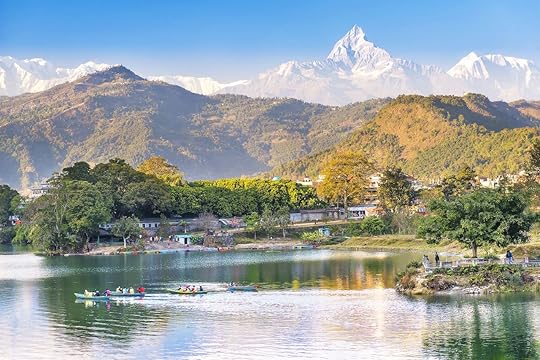
Photo: PHANUPONG CHUATAEW/Shutterstock
Pokhara is a favorite Nepali city for many because it is less polluted and hectic than Kathmandu. It is the country’s second-largest city and is primarily known as the gateway to the Annapurna Conservation Area, however, the city and area surrounding it make for an ideal mountain retreat. Pokhara is the perfect place to put your feet up or perhaps even hands to the ground in downward facing dog especially if you’ve just completed the hard slog around the Annapurna Circuit. The city is peaceful for its size — nearly 300,000 — and boasts some of Asia’s best yoga retreats with plenty of options ranging from drop-in classes to teacher training courses for beginners to advanced yogis. For the best experience, find a studio with views of Phewa Lake and toward the white-capped peaks of the Annapurna Range. The tourist-oriented lakeside area has a number of vegan-friendly cafes. Its international vibe means non-Nepali-specific items like smoothie bowls and freshly baked croissants are available, but you have to try a proper Nepali coffee at one of the cafes.
3. Visit the tea plantations in Ilam.

Photo: ConanEdogawa/Shutterstock
The hill station of Ilam in the far east of Nepal is one of the best off-the-beaten-track places to explore in the country as hardly any tourists make it this far east. The small town is surrounded by rolling green hills and tea plantations that see far less tourism than popular tea-producing areas like India’s Darjeeling, just across the border. Exploring the tea gardens and taking strolls through the hills is the best way to explore the area. The town also makes an attractive pitstop if you have plans to cross the eastern border to India. If you do take the time to visit Ilam you’ll most likely have the place to yourself, but be warned that the trip from Kathmandu is quite long — you’ll spend nearly a full 24 hours on the bus, though you can cut that down to 12 hours by driving yourself or 1.5 hours if you fly.
4. Go on safari in Chitwan National Park.
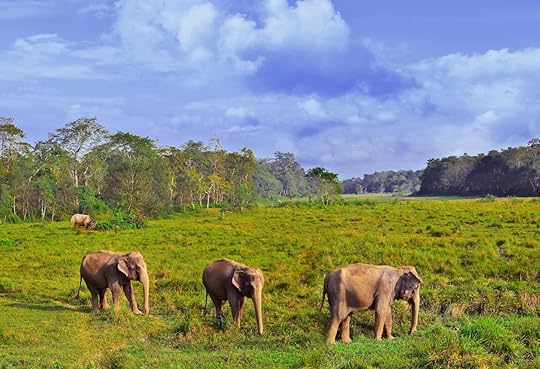
Photo: natalia_maroz/Shutterstock
For nature and animal lovers, Chitwan National Park is one of the most well-preserved conservation efforts in all of Asia. It was Nepal’s first national park and the dense forest and marshland stretch for more than 930 square kilometers of pristine wilderness. You’re likely to find one-horned rhinos, deer, monkeys, and over 500 species of birds. However, what lures most people to this part of southern Nepal is the chance to see elephants, leopards, sloth bears, and the Bengal tiger. Don’t hold your breath, however, as sightings of the majestic tiger are increasingly rare.
The best ways to explore the large area are by jeep safaris or canoeing down the Terai River. Elephant-back safaris were once a popular attraction in the park, although for the sake of animal rights and ethical tourism, this is becoming a less accepted option. This part of the lower Terai also has a more tropical climate, making the jungle camps and resorts a nice alternative to the bitterly cold teahouses in the mountains. Just don’t forget to bring mosquito repellent.
5. Stroll through Bandipur and other charming rural towns.
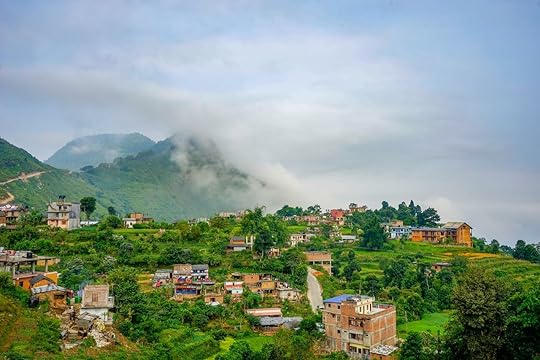
Photo: angela Meier/Shutterstock
To escape the hustle of Kathmandu and the crowded tourist shops of Pokhara, you can explore some of the smaller rural towns between the two cities. At an ideal halfway point on the highway between them is the small hilltop settlement of Bandipur, a well-preserved Newari town. The Newar people are the historical inhabitants of the Kathmandu Valley who established a prosperous trading center at Bandipur in the 18th century.
The appeal of the small village is its main bazaar that has remained unchanged over time with intact traditional architecture. It’s known to have an old European vibe, so don’t be alarmed if you feel like you’re wandering the streets of a small Medieval town in Italy or Spain. And just like on any European escape, the highlight is sampling some of the traditional food, which includes beaten rice, bamboo shoot soup, and bara, a pancake-style snack made from lentils. The view from the hilltop is also exceptional and if you’re lucky enough to get a clear morning, you’ll have a picturesque panorama of the Himalayas across the horizon. The best place to catch the sunrise or sunset is from a viewpoint, accessed by a steep set of stairs just outside the bazaar.
Further afield is the village of Gorkha, home to the famously fierce Gurkha warriors and the birthplace of Prithvi Narayan Shah, who unified the country in the 18th century. Despite the village being the starting point for the Manaslu Circuit trek, its historical and cultural significance demands a trip by any visitor to the country. The old Durbar Palace, with a 360-degree view of the surrounding area, remains the village’s main attraction.
6. Raft down the Trisuli River.
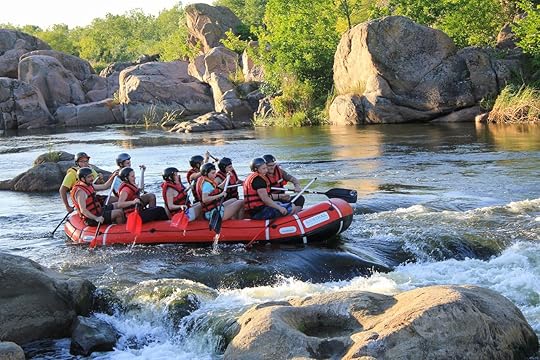
Photo: Pafnuti/Shutterstock
If you’re up for an outdoor adventure that doesn’t require moving your legs too much, try the river rafting. Nepal is considered one of the best places in the world to tackle white-water rapids, which is no surprise considering the steady flow of water that the Himalayan glaciers provide.
One of the best ways to avoid a long eight-hour bus ride between Kathmandu and Pokhara is to raft half of it. The main road between the two big cities follows the Trisuli River and a number of agencies offer day excursions down the relatively gentle rapids that are fit for any age and skill level. If you’re slightly more adventurous and up for a truly unique Nepal experience, then you can also opt to do multi-day rafting expeditions that can include up to 10 days down extremely difficult rapids along the remote Sun Kosi and Tamur rivers — something you can certainly brag about to your Everest Base Camp trekking friends. The rafting seasons are the same as the trekking months, although in autumn after the monsoon is considered superior in terms of water level and thrills. 

More like this: This motorcycle tour is the most epic way to see the Himalayas
The post Six things to do in Nepal that aren’t trekking appeared first on Matador Network.

The best things to do in Sedona

Here’s some good news for travelers visiting Arizona — a trip to Phoenix can easily include a visit to Sedona, so there’s no need to choose between these two amazing destinations. Sedona is less than a two-hour drive north of the capital, with the bonus of being not too far out of the way if you’re road tripping to the Grand Canyon, making it the perfect place for a day trip. Sedona is an adventurer’s playground, full of hiking and biking trails, outdoor excursions, and incredible views of northern Arizona’s jaw-dropping red rocks. To optimize your time outdoors soaking in all of the natural beauty this town has to offer, consider these trip ideas.
Getting there
If you’re coming from Phoenix, head up I-17 North toward Flagstaff and get off at Highway 179 North. Follow it through the Village of Oak Creek and into red rock country to State Route 89A, which is the main road through Sedona. The best practice is to either leave Phoenix early in the morning and head straight to the trailhead or camp overnight in Red Rock State Park, Slick Rock State Park, or in dispersed camping spots outside of town. Trails and activities tend to fill up, so the earlier you’re up and active, the better.
Take a hike

Photo: Lissandra Melo/Shutterstock
There are over 300 miles of hiking and biking trails to explore around Sedona. While some are accessible for free, others are in National Forest areas where you’ll need a Red Rock Pass. Day or week passes can be purchased throughout Sedona at the visitor’s center, ranger stations, and trailhead parking lots. Each parking lot that requires the pass will specifically state that a permit is needed. You can also stop by the visitor’s center for trail maps and information on which trails need permits and which don’t. As with all outdoor activities in Arizona, bring plenty of water with you, wear sunscreen, and pick up your trash.
West Fork Trail
If you’re not an experienced hiker but still want to see some of the best scenery Sedona has to offer, try the West Fork Trail. It’s just over six miles round trip, mostly flat with 13 stream crossings that involve stepping from rock to rock or across logs. The trail is semi-shaded by trees, which makes for a perfect mix of forest and red rock scenery, and it ends at a large pool of water. Come early to beat the crowds as this is a very popular hike with a small parking lot. It’s also a great place to see the leaves turn colors in fall — which is pretty rare in Arizona. You will need a special parking pass for this trail, $10 per car, and it’s cash only.
Fay Canyon Trail
Another great beginner hike is Fay Canyon Trail in West Sedona. It’s another in-and-out trail, but only 1.2 miles each way instead of the three on West Fork and offers pretty flat hiking through a canyon with shade after the first half-mile. It’s a great trail for kids and leashed dogs, and for a little more adventure, scramble up the rocks at the “end of the trail” sign for a great view of Bell Rock off in the distance. But even without the last bit, the hike is beautiful and great for those looking to break into hiking easily and slowly.
Doe Mountain Trail
Doe Mountain Trail in West Sedona is the place to head for a firm, though quick, challenge. This trail has steep switchbacks up a mesa for the first two-thirds of the hike, then plateaus on top of the mesa for incredible views of the city. It’s less than a mile to the top for the view, with an option to do an additional 1.3-mile loop around the mesa’s edge. You may start wondering what you got yourself into with the steep 400-foot elevation gain in the beginning, but it’s worth the effort to see the views at the top. Just be prepared to sweat — the trail is steep in parts with some minor boulder climbing. A Red Rock Pass is required to park and use the trail.
Devil’s Bridge Trail
Not that we encourage selfie sticks on the trail, but Devil’s Bridge is about the best spot for a photo in all of northern Arizona. The bridge itself is the largest natural sandstone arch in Sedona, accessed by a 4.2-mile trek out and back that’s heavily trafficked by hikers, bikers, and some motorized vehicles. The first part of the trail runs along a wide dirt road also used by jeeps and off-highway vehicles, but then you’ll split off into a hiking trail with much less traffic. This is a fairly intermediate hike, though there’s hardly any shade so bring plenty of water and a sun hat. You’ll be rewarded at the end with incredible views of the arch and even the chance to step out onto the natural bridge if you dare. As with the other near-town trails, start early as it gets busy. You may have to wait in line to take photos on the arch and there are no safety railings so watch your step — it’s a long way down.
Ride the trails
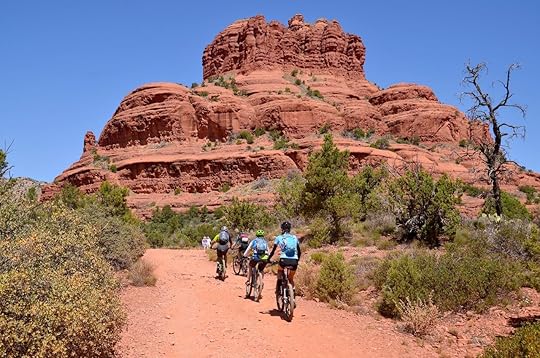
Photo: meunierd/Shutterstock
Mountain biking is another popular activity with trails for every ability easily accessed from the town. Sedona offers the benefit of year-round trail access, though spring is when the scene goes off for the annual Sedona Mountain Bike Festival. Rentals and guided tours are available from Over the Edge, which is also the best spot to pick up a trail map, check conditions, and ask for trail recommendations. Several places around town, including Sedona Mountain Bike Academy, also offer classes and workshops for beginners. The stakes are a little higher on a bike than hiking, so be very conscious of choosing a trail that fits your ability level.
Beginner trails
If you’re brand new to mountain biking, check out Bell Rock Pathway and Deadman’s Pass Trail, both accessed easily from town. Bell Rock Pathway loop is one of the easiest — and flattest — trails in Sedona and is perfect for beginners to learn the basics. You get the amazing views without the difficulty. Deadman’s Pass Trail has multiple riding surfaces including dirt roads, wide dirt trails, and single track riding. It’s a great trail for beginners to practice upping their skills to intermediate.
Intermediate trails
Chuckwagon Trail is a great option for intermediate riders. This blue square-rated trail typically has some hiking traffic in the beginning but becomes quieter as you get further out. It’s a mix of dirt, slickrock, and rocky patches that give you plenty of terrain options without being too extreme.
Mescal Trail is another blue square-rated trail with epic scenery and some challenging spots for intermediate bikers to hone their skills. A mix of red dirt trail and slickrock, this ride can be done as an in-and-out option or you can combine it with other trails such as Chuckwagon for a longer loop. Less experienced riders may have to walk some parts, but there are several alternate lines along this trail to keep advanced riders interested.
Expert trails
For expert riders, Hiline and Hangover are two of the most challenging trails in the area. Double black diamond portions, slickrock, cliff edge riding, and steep technical riding make for a solid workout while providing epic red rock views. These two rides are definitely not recommended for beginners.
Chill in the Jeep

Photo: Autumn Sky Photography/Shutterstock
Hiking and biking are two of the most popular ways to experience Sedona’s outdoors. Not everything has to be such hard work, though. There’s always the option to be guided through the landscape on four wheels instead of two. Several Sedona companies offer jeep tour excursions, like the iconic Pink Adventure Tours that will take you into the backcountry to see some of the area’s most recognizable locations. Its trips last anywhere from two hours to all day, and it has recently expanded offerings to include additional Arizona icons such as Antelope Canyon and the Grand Canyon. Other companies such as A Day in the West will combine jeep tours with other activities such as horseback riding, wine tasting, and helicopter tours.
Play in the water

Photo: Brent 1/Shutterstock
If you’re heading to Sedona in the summer, head to the water to cool off after your time on the trail. The most well-known area in Sedona to enjoy the creek that carves through northern AZ, as locals call it, is Slide Rock State Park in Oak Creek Canyon. Originally an apple farm, visitors now flock here to escape the heat by jumping into the river and being pushed by the current down the naturally created waterslides. Fees to enter the park are between $10 to $20 per car depending on the time of the year. Get there early as parking is limited and it’s a very popular spot. You can bring chairs and picnic blankets to make a day of it, and there are restroom facilities on site. Insider tip: It doesn’t look like it, but the water is cold and the sandstone rocks are pretty slippery, so water shoes are recommended.
If you want to get on the water near Sedona but feel like avoiding the crowds at Slide Rock, head a few miles south to the Verde River with a kayak tour from companies such as Sedona Adventure Tours. Many companies offer kayaking, paddle boarding, and tubing tours down the Verde with multiple trip options throughout the day. These can last up to several hours while you float downstream, enjoying the arm work out and the quiet sounds of nature. Afterward, it’s a quick drive back up to Sedona to continue your day, or an easy drive back to I-17 South to head down to Phoenix.
Where to eat in Sedona
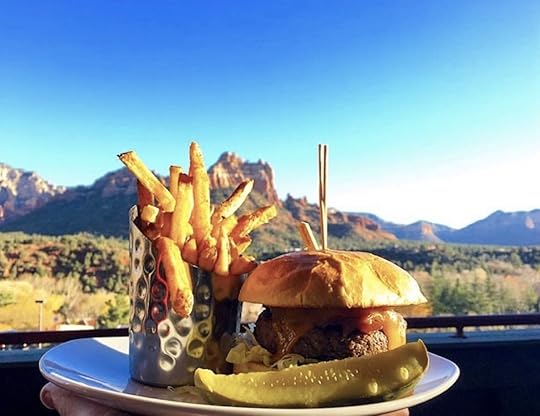
Photo: Open Range Grill and Tavern/Facebook
There are plenty of delicious options throughout Sedona to fuel your outdoor adventures from sunup to sundown. Start the day at Red Rock Cafe in the Village of Oak Creek, fueling up with a plate of eggs, French toast, or Mexican-inspired breakfast dishes. After a morning of adventuring, stop for lunch at Chocolatree. Vegans and non-vegans alike will enjoy the organic gluten-free menu and delicious meals made from scratch. It also has an organic chocolatier with enough decadent choices to make any sweet tooth happy.
For something more substantial, or perhaps beer and a burger, the Open Range Grill & Tavern serves sandwiches, burgers, and BBQ; pours local brews on tap; and provides giant windows overlooking Sedona’s landscape. End the day relaxing at Creekside Sedona, an American bistro along the Oak Creek where you can watch the water from the shaded patio. Or get one last selfie with panoramic views of the red rock mesas from The Hudson’s outdoor patio while enjoying a cocktail. 

More like this: 5 ways to spend your day on the water near Phoenix
The post The perfect day trip to Sedona for outdoor lovers appeared first on Matador Network.

Tintagel footbridge opens Cornwall

Fans of Arthur, Merlin, Pendragon, and Morgana are in for a treat. A footbridge has been constructed to the ruins of Tintagel Castle in Cornwall, England, where King Arthur is said to have been conceived. Previously, visitors had to climb 148 steep steps to reach the site; now, it’s as easy as crossing a 223-foot bridge over a rocky ravine.
In the legend, Uther Pendragon had been transformed by Merlin to resemble Igraine’s husband, the Duke of Cornwall, to spend the night with her. Pendragon supposedly crossed the canyon that visitors can now traverse to reach Arthur’s mother.
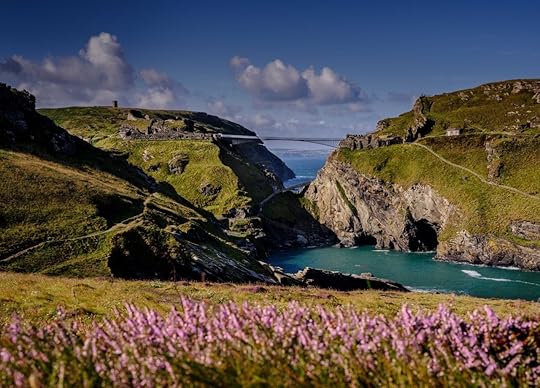
Photo: English Heritage/Facebook
It is said that Richard, Earl of Cornwall, was so intrigued by the legend that he built the castle in the 13th century. Back then the building was linked by a narrow land bridge, which later disappeared, leaving the castle divided, with one part on the mainland and the other on a headland. The new bridge joins these two parts in the same way they were united in Medieval times.
Nowadays, people are just as intrigued by the legend, and 250,000 visitors a year flock to the castle, The Guardian reported. Given the tiresome and dangerous nature of the steps, however, it used to take a long and frustrating time to get from one side of the castle to the other. The goal of the new footbridge is to change that.
The footbridge is unusual in that it’s two cantilevers that meet but do not touch — there is a gap less than two inches in the middle. The structure is also paved Cornish slate installed vertically.
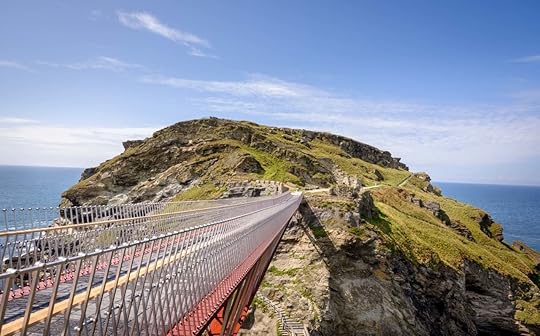
Photo: English Heritage/Facebook
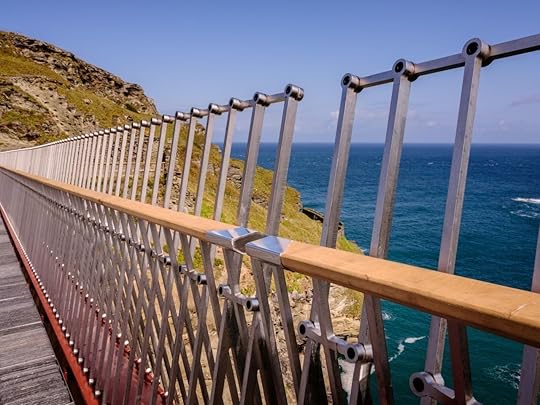
Photo: English Heritage/Facebook
The bridge’s opening has been delayed due to poor weather conditions, but it will officially open to the public on Sunday, August 11. 

More like this: The prettiest bridge in every state
The post This dramatic footbridge just opened in the heart of the Arthurian legend in Cornwall appeared first on Matador Network.

Chernobyl vodka

Chernobyl is all over the news these days — an HBO show created about the 1986 nuclear disaster recently aired and led to a spike in visitors to the Exclusion Zone; in July, the government of Ukraine turned the site into an official tourist attraction; and now, scientists are making booze from crops grown in the area.
Atomik Vodka is an artisan spirit made with grain and water from land in the areas of Ukraine abandoned after the explosion and it’s the first consumer product to come from this part of the world.
A group of scientists from Ukraine and the UK, who have been studying the radioactivity of crops in the area, brewed one bottle of the unique spirit.
And no, the vodka is not radioactive. The distillation of the fermented grains reduces radioactivity in the grain to make a product that is no more radioactive than any other vodka.
Professor Jim Smith of the University of Portsmouth, a leading expert on Chernobyl and a member of the group that led to the making of Atomik Vodka, is confident that this is the start of the economic revival of the area. He said to the University of Portsmouth, “I think this is the most important bottle of spirits in the world because it could help the economic recovery of communities living in and around the abandoned areas.”
Seventy-five percent of the profits from the sale of Atomik Vodka will be given back to the communities still economically impacted by the explosion.
According to the BBC, bottles won’t be widely available for a while, but the research team aims to produce 500 bottles this year and mainly sell them to the tourists who visit the Exclusion Zone. 

More like this: How to visit Chernobyl safely and legally
The post This new vodka is produced in Chernobyl appeared first on Matador Network.

The best free fitness classes in NYC

Prioritizing fitness during a trip is no easy feat. Of course, it is important to keep active while on vacation, but your travel partners may not want to make room for sweat sessions, day passes at gyms can cost a fortune, and let’s face it, hotel room yoga is simply not the same. Lucky for all who are visiting the boroughs this summer, New York City has a plethora of options when it comes to commitment- and cost-free fitness.
Thanks to the city’s abundant offerings, exercise doesn’t have to be something you squeeze in; it can be part of the trip. After all, nothing’s going to give you a local experience like doing cardio with a room full of New Yorkers. So, go ahead and pack your tennis shoes for these free fitness programs around the city. And no excuses about timing, because there’s one for every day of the week.
1. Monday: Pilates in Bryant Park
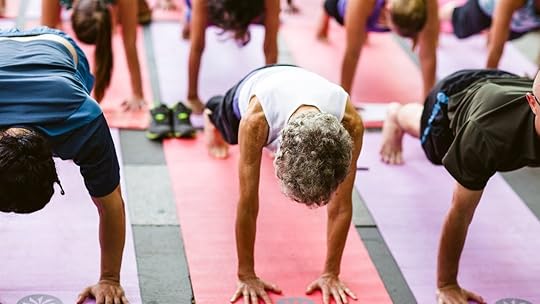
Photo: Bryant Park
Kick-off the week with some scenic stretching in Bryant Park. This patch of grass in the middle of Manhattan is wedged between Rockefeller Center and the Empire State Building, so you can squeeze it in before sightseeing. The class is presented by Pilates Initiative and Return to Life Center and is capped at 30 attendees. It runs from 7:30 to 8:30 AM every Monday until August 26.
2. Tuesday: Adidas Women’s Run
You don’t have to be a marathoner to participate in this running club. Women, in particular, can perhaps feel more comfortable about keeping up with this totally non-pretentious, beginner-friendly (and women-only) guided run. It’s a 2.5-mile trip starting in SoHo and it happens at the crack of dawn every Tuesday morning. Men are free to join in on other Adidas runs throughout the week. Be sure to sign up in advance to secure your spot.
3. Wednesday: Yoga on the Hudson
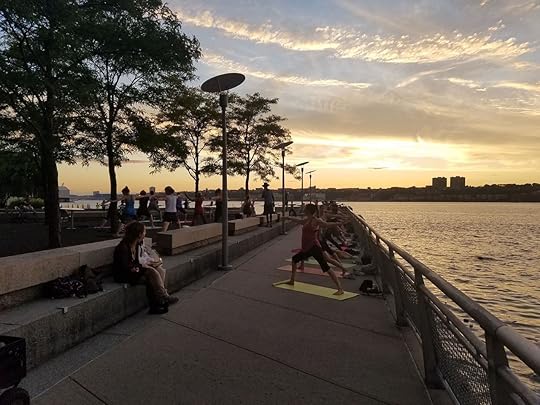
Photo: Summer on the Hudson/Facebook
Let’s say you’re looking for something mellow that you don’t have to wake up early for (it is a vacation, after all). Bring a mat — or an extra towel from the hotel because who travels with a yoga mat? — to the waterfront for an evening “Salute to the Sun” on the Hudson, part of the Summer on the Hudson programming series. Golden hour is the backdrop for this hatha yoga class, held every Wednesday evening through September at Riverside Park South starting at 6:30 PM.
4. Thursday: Meditation at Athleta
There are a number of retailers around the city such as Adidas, Athleta, and Lululemon that offer free fitness programming throughout the summer. This activewear brand’s Rooftop Series offers three classes per week at the trendy SIXTY SoHo Hotel, so you could even reward your workout with a cocktail downstairs. Thursday’s 7:00 AM BodyART class is described as “meditation in motion.” Reserve your spot on Athleta’s website and see what it’s about.
5. Friday: Destination Deck with the November Project

Photo: November Project – NYC/Facebook
November Project, named after a book about free grassroots fitness published in 2016, is a national movement that aims to bring unrestricted group fitness to cities around America. The demographic of this crowd skews young and trendy, and Friday mornings are reserved for Destination Deck at Hudson Yards. In this fun workout, a deck of cards is used to determine the exercises, so it changes every time.
6. Saturday: Cardio at Lululemon’s Hub Seventeen
Just 50 minutes of mid-morning cardio before Saturday brunch is enough to keep you on the fitness wagon during vacation. You’ll come back refreshed — perhaps even sore — after taking Lululemon’s Barefoot Cardio + Strength class at Hub Seventeen. This 10:15 AM congregation combines yoga, Pilates, and barre to give participants a challenge that’s within their reach, whatever their fitness levels may be.
7. Sunday: Yoga in The Battery

Photo: Tejal Yoga/Facebook
Finish off your week in the bustling city with a wind-down in The Battery. This is perhaps your once-in-a-lifetime opportunity to practice your bridge pose with a view of Lady Liberty (and what a sweet memento to take home with you, too). This class is open level, so beginners are welcome, and takes place every Sunday at 11:30 AM on the Woodland Lawn in The Battery through September. 

More like this: New York City’s largest state park just opened in Brooklyn and it’s a welcome slice of paradise
The post The best free fitness class for every day of the week in New York City appeared first on Matador Network.

Hästens Vividus luxury bed review

When you hear a bed costs $189,000, it comes with a certain set of expectations. It should look like something a newly paid rapper would show off on Cribs, complete with a solid gold headboard and sapphire tufts. The only other one in the world should be perched atop a 19-star suite somewhere in Dubai. There should be rumors Putin has one, too.
It should look like the inside of a Faberge egg, and come with Scarlett Johansson or Chris Hemsworth under the covers. Just something to signify you’ve dropped the price of a house on a piece of sleeping equipment.
So when I walked into the Hästens Vividus suite at Brickell Mattress — a nondescript storefront in Miami’s gritty Little Havana — you’ll excuse me if I was initially a little underwhelmed.
Instead of the set of Most Expensivest, I stepped into what can best be described as a plush Swedish B&B. The bed was big, fluffy, and painfully inviting, but it was also simple, done up in a blue plaid with a gray headboard and a plain wooden frame. It screamed Scandinavian utility, not ultra-luxury. But as I learned, the world’s most expensive bed is about a lot more than aesthetics.

Photo: Hästens Vividus
Finding the value in a six-figure bed
For 189 grand, you better sleep like the only thing that’s waking you up is Prince Charming. And that’s exactly what the ultra-luxury Swedish bed-makers at Hästens are going for. The company has been around for 166 years and knows a thing or two about creating good sleep.
“People see the value in spending $189,000 on a car,” said Brickell Mattress founder Matt Byrd, clearly having spent a little too long in South Florida. “But, especially people who don’t have sleep issues, they don’t see the value in spending that on a bed. You spend how long in your car a day, couple hours? When you get great sleep, it changes everything, makes you ready for the day.”
To give people the best preparation for their days possible, Hästens assembled nine of its master craftsmen and planned the bed out for months, Byrd said, before ever coming out with a finished product. The first version of the bed debuted 11 years ago, and took 160 hours to make, a three-mattress tower constructed of woven cotton, flax felt, steel Bonnell springs, oak dowels, Swedish pine, and tightly curled horsetail hair.
The layers stand nearly twice the height of the bed when they’re put together, until they are compressed and hand-tufted to hold it all together.
Today, the bed takes nearly 330 hours to construct. Each year the craftsmen make improvements, meaning the newest bed is always the best bed. Only 70 are made each year, and once they sell out, no more are produced.

Photo: Hästens Vividus
Inside the showroom, Byrd took me to a cutaway of the inside of a similar Hästens bed, where you could feel the coiled horsetail and cotton. It felt a little like smooth steel wool, that same flexible density, minus the sharp edges.
“Take a look at this poster,” Byrd said as he took me to the side of the room, where a poster of a gratuitously naked woman laying on her side on a cutaway of the mattress hangs. “In addition to not having any clothes on, this woman’s spine is in perfect alignment.”
I nodded, trying to ignore the butt crack looking back at me.
“It’s parallel to the floor just as it should be. If this is too firm of a bed, her shoulders aren’t getting down enough, which means her spine is going to tilt up. If it’s too soft, there’s not going to be enough pushback, and the whole body will sag. There’ll be a little bit of dip in the spine, which will ultimately lead to the spine being misaligned again.”
The flexibility and support of the Vividus, he said, allowed it to contour to the body perfectly. I still couldn’t tell how this was any better than memory foam. But that, of course, is why they have the demo suite.

Photo: Hästens Vividus
Taking a nap in the world’s most expensive bed
“Go ahead and take off your shoes and get in there,” Byrd said as he directed me toward the Vividus. “And let’s lose that pillow so you can really feel it.”
I kicked off my shoes and laid back in the bed. The horsetail-hair pillow-topper felt like a fuller version of my bed at home. Comfortable, but not necessarily $189,000 comfortable. Then Byrd shut off the lights and closed the door to the suite, leaving me in complete silence and darkness.
I felt myself falling into the mattress, almost like I was becoming immersed in whatever sleepy energy it produced. I had the sensation of sinking a layer or two into the cloudy, dreamy space, but still supported from the bottom. It felt almost like floating a few inches under the water, without the motion. I drifted off, even after having finished a Cuban coffee on the way over.
Five minutes later, when Byrd politely opened the door and woke me up, I felt more refreshed than I had after some full nights in luxury hotels. And was wondering where I might find an extra $189,000 laying around.
Grounding yourself to the earth in the comfort of your own bed
“Did you notice anything?” Byrd asked. I told him I felt like I was one with the Vividus. That I’d felt completely weightless and weighted at the same time, in a sort of neutral existence that was completely calm.
“Ah ha. You’re familiar with the concept of grounding, right?” he continued, explaining briefly about the idea of the human body’s electronically conducive contact with the earth, relieving stress, tension, and medical problems. “I didn’t know if I believed it, because we had people come in here and some would actually be cognizant of the effects of grounding. But it’s not a tangible thing that you can reach out and touch per se, so I kind of stayed away from mentioning it.”
He handed me an article on thick bond paper from the Journal of Environmental and Public Health.
“But what we found out was, for people that are experiencing some form of distress, they’re more in tune with the effects of grounding. If they’re carrying that extra charge, they get into a bed that grounds them and it pulls that out,” he continued. “They can actually feel that. Some people explain it as a bit of a tingling feeling. Other people just describe it as an added sense of relaxation. But these beds are actually built with the ability to ground your free radicals, you know, and what is it that does that? Primarily it’s the flax.”
We thumbed through the article, titled “Earthing: Health Implications of Reconnecting the Human Body to the Earth’s Surface Electrons,” which essentially found that in a placebo-controlled study, test subjects put in beds like the Vividus (though not the Vividus itself) 100 percent said they woke up feeling better rested, versus 13 percent for control. Nearly all took less time to fall asleep, had better quality sleep, and awoke with fewer joint pains. The control group didn’t inch much above 13 percent.
The point is, there’s some science behind what a $189,000 bed can do. Whether or not that’s worth the price tag, however, has a lot to do with how much money you can spend.

Photo: Hästens Vividus
Who’s actually buying these things?
“It’s not just billionaires buying these things,” Byrd said. He told me of a chiropractor and his wife who’d bought two of them, one for each person. Regent Cruise Lines also purchased one for a forthcoming 4,500-square-foot suite. Some luxury hotels also bought a Vividus. “It’s not the real flashy people. It’s not about, what are they going to thing down at the club when they hear I got this. It tends to be people that are more intrinsically motivated.”
He also mentioned a couple of A-list musicians who allegedly travel with them. Later, he called me to tell me he’d met with a wealthy Saudi who was interested in buying a Vividus. It takes all kinds.
Magical as the Vividus was, my old pillow-top Serta still felt pretty good when I got home. Though I would never turn down another chance to nap in the world’s most expensive bed, it’s not something I’d take out a second mortgage to do. That said, if $189,000 to me was a week’s worth of work, it’s definitely a solid investment. Like everything in life, value is relative. 

More like this: 7 serene, remote campgrounds perfect for a life detox
The post This bed costs $189,000. We tested it to find out, good god, why? appeared first on Matador Network.

August 7, 2019
Solutions for pollution

Pollution is a global problem, among the greatest the world collectively faces. The World Health Organization approximates seven million deaths annually to air pollution, with countries like India and China experiencing record levels of hazardous particulates. Trash fills our streets and oceans, creating a debris heap the size of an island you might expect to see somewhere off Hawaii’s main archipelago in the case of the Great Pacific Garbage Patch.
It’s not all bad news, though. World leaders have pledged to look to energy alternatives to curb dangerous emissions and streamline waste-management systems to cut back on litter. India is working toward using exclusively electric vehicles, rickshaws included, by 2022. Beijing even hopes to power the 2022 Winter Olympics with as much renewable energy as possible.
Global citizens are doing their part, as well. Grassroots initiatives like #trashtag, a social-media movement promoting local cleanup efforts, are encouraging sustainable practices the world over. Measures both big and small, all of them significant, are being taken to curb pollution, some more creative than others. The following places are proving just how much of an impact a little brainstorming and elbow grease can have on cleaning up the planet. After all, if every mindlessly flicked cigarette butt adds up, so does every thoughtfully recycled plastic.
1. Japan

Photo: easy camera/Shutterstock
Anyone who’s been to Japan knows that public trash cans are surprisingly hard to find. Yet, somehow, you have to hunt just as hard to find litter.
Following a series of deadly sarin gas attacks on the Tokyo subway system in 1995, most of the nation’s trash bins were removed. Though some would take the absence of bins as license to litter, Japanese citizens only became more responsible for their waste, opting to carry it on their person until they can dispose of it responsibly. It’s even common for smokers to travel with personal ashtrays, and most people carry hand towels since paper towels were largely done away with alongside trash cans in public restrooms.
Pollution is minimal throughout Japan, but one town in the Tokushima Prefecture goes above and beyond. More than 15 years ago, Kamikatsu implemented a zero-waste policy in the hopes of being completely garbage-free by 2020. Where many places in Japan burn, bury, or dump their trash in landfills, Kamikatsu relies on composting and recycling, a comprehensive procedure that includes sorting waste into 45 different categories.
Going completely waste-free is a lofty goal, but in Kamikatsu’s case, the policy has been surprisingly attainable with an 80 percent success rate to date. And with half a year to go before the town’s self-imposed deadline, time will soon tell how easy it is to be collectively waste free.
2. Sweden

Photo: David Pereiras/Shutterstock
There’s a new fitness craze in Sweden that’s as good for the environment as it is for the body. It’s called plogging, and it’s as simple as picking up trash while you jog. Now a global trend that’s been documented everywhere from New York City to Australia, the phenomenon began in Are, Sweden, thanks to eco-enthusiast Erik Ahlstrom.
While you can join group events in Stockholm and beyond, plogging is a worthwhile exercise anytime you want to squeeze in a workout. Not just good for the planet, it’s also a great way to upgrade your daily jog. After all, as Ahlstrom told Reuters, “Plogging burns more calories than regular running — you have to bend and squat, it’s good for the legs and you get a better body.”
3. Iceland

Photo: Inspired by Iceland/Facebook
Sometimes it’s the simplest, most careless acts of consumption that have the greatest consequences, like buying a bottle of water on a hot day because you can’t be bothered to track down a drinking fountain. Though many of us now carry reusable bottles at home, old habits die harder abroad, a problem Iceland’s tourism board is trying to remedy.
Imploring visitors to hydrate responsibly, Inspired by Iceland has issued the Kranavatn Challenge to promote its premium tap water brand. Kranavatn is just regular tap water, but by branding it as a luxury good in airports, restaurants, and other places tourists frequent, the country hopes to steer travelers away from single-use plastic bottles.
Beyond doing your part to reduce the negative impact Iceland’s surging tourist numbers are having on the small nation, signing up for the Kranavatn Challenge has its perks. Every participant who pledges to stick to tap water while in Iceland will receive a credit for the amount they’d otherwise spend on bottled water, which can be redeemed at select locations.
4. Curitiba, Brazil
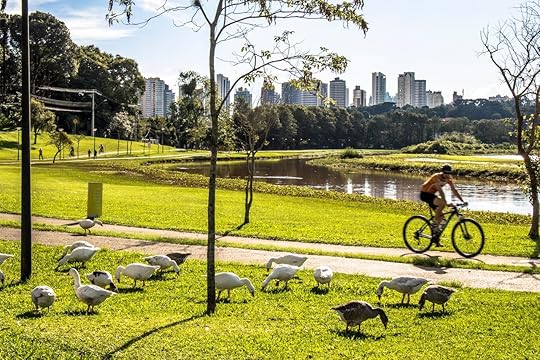
Photo: Alf Ribeiro/Shutterstock
If you ask Curitiba, trash can be more than just garbage; it can be currency. Lacking a budget for a recycling center, the city found a more creative solution for its waste disposal by incentivizing residents to sort their recyclables through an exchange program in which organic and non-organic materials can be redeemed for bus passes, school supplies, and more.
Not only helping reduce pollution and manage landfills, the lixo que não è lixo (“garbage that is not garbage”) program is also addressing a number of community issues. That students can trade recyclables for books and other supplies is improving literacy rates and normalizing sustainable practices for the younger generation. The program is also stifling food insecurity as recycled waste can be redeemed for food and produce grown on local farms.
5. Rotterdam, Netherlands
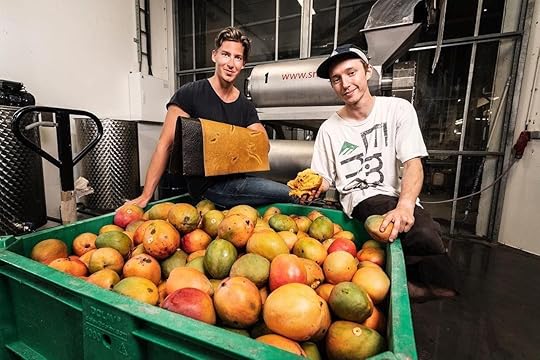
Photo: Fruitleather Rotterdam/Facebook
The fashion industry has always taken flak from animal-rights activists, but more and more eco-warriors are starting to point the finger at clothing and accessory manufacturers. Leather goods are particularly bad for the planet, resulting in everything from greenhouse gas emissions to water pollution. Rotterdam’s Fruitleather project sources leftover fruit from Dutch importers to create a “durable, leather-like material” that can be used to make everything from shoes to purses while leaving a fraction of the carbon footprint. The initiative’s chief goals are to create a sustainable alternative to animal leather and highlight the problem of food waste, simultaneously demonstrating that positive uses for waste exist.
6. Mexico City, Mexico

Photo: Archello
A sprawling metropolis with more than 21 million residents, Mexico City has a massive smog problem. Equally massive strides will need to be taken to get the city’s air pollution under control, and while its innovative smog-eating hospital won’t improve the overall air quality on its own, it certainly gets points for creativity.
Yes, you read that right. The Torre de Especialidades hospital in Mexico City is designed to absorb smog and turn pollutants into harmless byproducts. It’s covered in tiles that have been coated with titanium dioxide, which undergoes a chemical reaction when exposed to sunlight that turns pollutants into water and carbon dioxide. Rather than reverse the effects of the city’s countless cars and factories, the hospital’s aim is to counteract at least some of the damage and purify the air in the immediate vicinity of the hospital to make it a safer place for patients.
Similar smog-filtering technology has also appeared in Milan, where the Palazzo Italia was constructed out of biodynamic cement and unveiled at the 2015 Milan Expo. With any luck, cities around the world will take cues from these two and start erecting greener buildings.
7. Denmark

Photo: Wefood – Danmarks første butik med overskudsmad/Facebook
Denmark is tackling pollution on all fronts, placing particular emphasis on eliminating food waste. In just a few years, the country’s food waste has been reduced by 25 percent thanks to Selina Juul and her organization, Stop Spild Af Mad, which began by appealing to supermarkets to offer discounts on individual, rather than bulk, produce. Danish capital Copenhagen has since opened a surplus supermarket, Wefood, offering produce at radically reduced prices to cut down on discarded food and benefit low-income shoppers.
Off the coast of Denmark, one island has taken particularly impressive measures to reduce its waste. And not just its food waste. With its incinerator on its last leg, Bornholm intends to reuse or recycle all of its waste by 2032 rather than invest in a new one. Like the residents of Kamikatsu, Japan, islanders will be asked to sort their trash into several categories, as well as organic waste that can be converted into energy sources.
8. Bangalore, India

Photo: K K Plastic Waste Management Ltd./Facebook
Bangalore’s KK Plastic Waste Management Ltd has found a practical fix for plastic waste that’s improving the city’s roads. The company operates a recycling plant that’s able to process up to 30 tons of plastic per day and, using a patented technology, turn all that waste into asphalt. Not only does this make the city’s roads sleeker, safer, and more durable, but it’s also creating jobs for locals. To date, the company has laid more than 1,200 miles of asphalt from around 10,000 tons of repurposed plastic. So, while car pollution is a problem of its own, at least Bangalore’s drivers can feel good about the roads they’re cruising down.
9. Ontario, Canada

Photo: City of London, Ontario – Municipal Government/Facebook
It’s all too easy to throw a greasy skillet in the sink after frying up your dinner, only to wash all that fat down the drain when you finally get around to doing the dishes. But improperly disposing of cooking oil can lead to fatbergs, masses of congealed grease that are exactly as gross as they sound. Fatbergs have a tendency to clog sewers, which is both expensive for cities and environmentally problematic. That’s why London in Ontario, Canada, encourages residents to use Your Turn cups to safely unload their fats, oils, and grease. All they have to do is empty their waste into the cups, freeze them, then deposit them at EnviroDepot centers where they’ll be converted into green electricity. Your Turn cups are available free of charge at the London Public Library.
Every responsible individual and family makes a difference, but commercial kitchens use considerably more cooking oil, compounding the fatberg problem significantly. Ontario has them covered, too. Canadian firm Green Oil Incorporated helps restaurants in the greater Toronto area recycle their grease by reselling it so that it can be turned into biodiesel products.
10. France

Photo: Intermaché
Not buying a bunch of bananas because you won’t eat them all before they go bad is one thing, but passing on an apple because it’s not as shiny as the others is a quick way to guarantee that a whole lot of perfectly good food goes to waste. And yet it happens. Constantly. Not in France, however, or at least at supermarket chain Intermarché, which sells its lopsided, irregular, or otherwise ugly produce at a serious discount. In another bid to curb food waste, the French Senate also passed a law a few years ago that made it mandatory for supermarkets to donate unsold food to charities and food banks rather than discard it.
Just this year, France passed yet another progressive pollution law, this time targeting light pollution. Light pollution is often overlooked in conversations about pollution, but it can have a devastating impact on wildlife by disrupting sleep cycles and drawing animals out of their natural habitats and into unsafe urban areas. France’s new law introduced regulations on public outdoor lighting features, implementing curfews and blue-light restrictions, banning sky beams and high-intensity lights, and prohibiting lights pointed toward the sea after dark, among other measures. It’s a big gesture for a country with a capital that’s nicknamed the City of Lights, and, hopefully, one that sets a trend for the rest of the world. 

More like this: 6 steps you can take today to become a zero waste traveler
The post 10 places that are tackling pollution in creative ways appeared first on Matador Network.

Matador Network's Blog
- Matador Network's profile
- 6 followers



